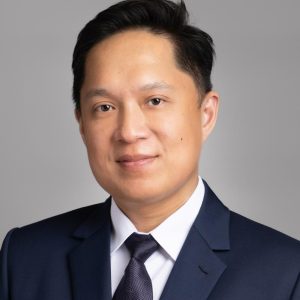THE SIN OF ENVY: COURT OF APPEAL HOLDS THAT ‘PROFITS’ FROM BILLION-DOLLAR PONZI SCHEME LIABLE TO BE CLAWED BACK, DOWN TO THE LAST NICKEL
April 7, 2025
For over a century,[1] charlatans have preyed on human greed and misplaced trust, using promises of extraordinary returns and secretive investment strategies to lure investors into Ponzi schemes. When these schemes inevitably collapse, those still holding onto a stake in the scheme are left high and dry while liquidators scramble to recover what little remains.
Those who manage to withdraw their profits and make an early exit are usually considered the lucky ones. That is, until the decision in CH Biovest Pte Ltd v Envy Asset Management Pte Ltd (in liquidation) and others SGCA 3 (“Envy CA”).
Agreeing with the High Court in Envy Asset Management v CH Biovest Pte Ltd SGHC 46 (“Envy HC”), the Singapore Court of Appeal (“CA”) ruled that CH Biovest, an “early exiter” in the Ponzi scheme run by Envy Asset Management (“EAM”) and its associated companies, was liable under statutory avoidance provisions to repay the S$2.3 million in “profits” it had received from EAM. Importantly, it did not matter that CH Biovest was ignorant of the fraud underpinning EAM’s investment scheme.
For retail investors, this decision is significant. It confirms that payouts from investments that later turn out to be Ponzi schemes are liable to be clawed back, even if the investor innocently believed the arrangement was legitimate.
Background
From 2017 to 2021, investors were led to believe by Ng Yu Zhi, the alleged mastermind behind the Ponzi scheme, that he could capitalise on purported price disparities in the nickel market to turn a profit. Using EAM and other related companies as vehicles for investment, investors were promised high returns from the supposed nickel trades. The catch: no such trades ever took place. Instead, investor funds were used to pay fictitious profits to earlier investors, fund lavish personal expenditures and cover operational overheads.
After deceiving investors of an alleged US$1.1 billion (S$1.5 billion), the scheme eventually collapsed in early 2021 when the Monetary Authority of Singapore placed EAM on its Investor Alert List, triggering investigations. This prompted liquidation proceedings and efforts to recover investor funds through the courts.
One such investor was CH Biovest.
At first instance, the High Court in Envy HC held that the S$2.3 million in “profits” CH Biovest had received from EAM (“Profits”) was liable to be returned because the transfer of Profits fell within the scope of relevant statutory avoidance provisions, namely (i) s 73B of the Conveyancing and Law of Property Act (Cap 61, 1994 Rev Ed) (“CLPA”) (now s 438 read with s 439 of the Insolvency, Restructuring and Dissolution Act 2018 (Act 40 of 2018) (“IRDA”)) which relates to transactions made with the intent to defraud creditors, and (ii) s 224 of the IRDA which relates to transactions at undervalue.
CH Biovest filed an appeal against the decision in Envy HC. This was dismissed in Envy CA. We summarise the important findings of Envy CA below, as well as key takeaways for commercial parties and insolvency professionals.
IMPORTANT FINDINGS BY THE COURT OF APPEAL
The Profits were not paid pursuant to any contractual obligation between EAM and CH Biovest.
CH Biovest argued that it was entitled to keep the Profits because they were paid out pursuant to a valid contractual arrangement. The CA disagreed. The CA observed that the contractual obligation between EAM and CH Biovest was for the payment of profits from EAM’s promised nickel trades – because no nickel trades were actually ever carried out, no ‘profits’ were actually made, and no moneys were ever actually due to be paid to CH Biovest. The payments were therefore extra-contractual in nature.
The Court distinguished the facts in Envy CA from the decision of the Judicial Committee of the Privy Council in Fairfield Sentry Limited (in Liquidation) v Migani and others UKPC 9 (“Fairfield Sentry”). In Fairfield Sentry, investor-parties invested in a mutual fund that in turn placed its assets under the management of Bernie L Madoff Investment Securities LLC (“BLMIS”). BLMIS was later found to be a Ponzi scheme. Under the agreement between the investor-parties and the mutual fund, the investor-parties would be paid returns based on the certifications provided by the mutual fund, which were in turn based on the (fictitious) reports provided by BLMIS. Given that BLMIS’s reports were part of its fraudulent Ponzi scheme, the issue was whether the investor-parties were still entitled to keep the returns paid out by the mutual fund.
The Privy Council allowed the investor-parties to keep the returns on the basis that these returns were paid out legitimately pursuant to the contractual agreement between the parties – the parties had agreed for payments made based on certifications by the mutual fund, which was exactly the case. This is in contradistinction with Envy CA where the payments were made extra-contractually.
Not every contract with a Ponzi operator will be subject to statutory avoidance provisions
The CA clarified that not all transactions involving Ponzi operators would be treated as extra-contractual and subject to avoidance provisions. The Court provided an example where a Ponzi operator obtains a legitimate loan from a bank to finance a lease operation. In this situation, the bank was not investing or lending into the investment scheme itself. Thus, like in Fairfield Sentry, the parties’ contractual relationship is a step removed from the Ponzi scheme. Interest on such a loan would therefore not be regarded as non-contractual in nature.
The CA held that “a distinction must be drawn between lending or investing into the scheme on the one hand and entering into a legitimate transaction such as a loan agreement with the entity on the other” (at [61]).
The Profits were liable to be clawed back under s 73B of the CLPA because CH Biovest could not rely on the defence under s 73B(3) that it had acquired the Profits for valuable consideration and in good faith
The CA found that while it was clear that CH Biovest provided consideration to enter into the contract with EAM, this was inconsequential to the analysis. Whether there was a binding contract between EAM and CH Biovest was not an issue. The real issue under s 73B of the CLPA was whether the conveyance itself, in this case the payment of the Profits, was carried out for valuable consideration.
Following from the reasoning that the payment of Profits was extra-contractual in nature, the CA concluded that payment of the Profits was made for no consideration at all, much less “valuable” consideration. As such, CH Biovest was not entitled to a defence under s 73B(3) of the CLPA. The Profits were therefore liable to be clawed back pursuant to s 73B(1) of the CLPA.
The Profits were also liable to be clawed back under s 224 of the IRDA because (i) the Profits were “gifts” and (ii) were paid out at a time when EAM was insolvent:
The CA held that Profits were “gifts” and liable to be clawed back because (i) the moneys were transferred for no consideration, and (ii) it was intended for CH Biovest to retain the benefit of the moneys.
The CA held that EAM was insolvent at the time the Profits were paid out under the cash flow test – at the time the Profits were paid out, EAM did not have sufficient realisable assets to pay its debts and liabilities as they fell due. In applying the cash flow test, the CA notably disagreed with the High Court and rejected the presumption that all Ponzi schemes are insolvent from inception. Nevertheless, the CA acknowledged that most Ponzi schemes are de facto insolvent, making proof of insolvency relatively straightforward in such cases.
There is no requirement for liquidators to select the “correct” avoidance provision
As a preliminary issue, the Court held that liquidators do not need to identify a single, “correct” statutory avoidance provision when applying to claw back payments. This is so long as the liquidators can satisfy the elements of the relevant provision and the claim serves the fundamental insolvency principle of pari passu distribution.
KEY TAKEAWAYS FOR COMMERCIAL PARTIES
Profits from Ponzi schemes are liable to be clawed back:
- Profits paid out from a Ponzi scheme may be subject to clawback under statutory avoidance provisions, whether as transactions made with the intent to defraud creditors (per s 73B of the CLPA (now s 438 read with s 439 of the IRDA)) or as transactions at undervalue (per s 224 of the IRDA).
- Innocence is not a defence – moneys can be clawed back even if the recipient had no knowledge of the fraud. Investors who unknowingly benefited from a Ponzi scheme may still be required to return their profits.
- Specific to Envy CA, other investors who previously earned profits under EAM’s Ponzi scheme may soon find themselves the subject of clawback applications by the liquidators of EAM and its related companies.
Not all transactions with Ponzi operators will be subject to clawback:
- The CA clarified that not every transaction involving a Ponzi operator will be deemed extra-contractual or subject to statutory avoidance provisions.
- Transactions unrelated to the fraudulent investment scheme itself, such as a legitimate bank loan to a Ponzi entity for operational purposes, are distinct and will not be treated as fictitious “profits” subject to clawback.
How to Minimise the Risk of Clawback Exposure
- Conduct thorough due diligence on companies parties wish to invest in. Verify the investment’s legitimacy, including the business model, financial statements, and regulatory compliance.
- Be wary of “too good to be true” returns – investment schemes offering excessively high returns with little or no risk are classic red flags of fraud.
- Seek legal advice before committing funds, particularly if promised returns seem disproportionately high or if there are signs of irregularity. Engaging legal counsel early can help safeguard your interests and mitigate potential liability.
KEY TAKEAWAYS FOR COMMERCIAL PARTIES
No automatic presumption of insolvency for Ponzi schemes:
- While most Ponzi schemes are de facto insolvent, the CA rejected a blanket presumption that all Ponzi schemes are insolvent from inception.
- Liquidators must still prove insolvency under the cash flow test in s 125(2)(c) of the IRDA.
Flexibility in selecting avoidance provisions:
- Liquidators do not need to identify a single, “correct” statutory avoidance provision when applying to claw back payments.
- This is so long as the liquidators can satisfy the elements of the relevant provision and the claim serves the fundamental insolvency principle of pari passu
How we can help you protect your interests
Prolegis LLC has substantial experience in commercial litigation and insolvency proceedings. We frequently act for both creditor and debtor parties in both contentious and non-contentious insolvency-related proceedings such as clawback actions, winding-up applications, judicial management proceedings, schemes of arrangement, and disputes involving fraudulent or undervalued transactions.
To find out more about protecting your interests and our disputes capabilities, please contact the authors, Daniel Chia, Yanguang Ker, Jonathan Tang, and Damian Tan, or your usual Herbert Smith Freehills Prolegis contact.
Prolegis LLC and Herbert Smith Freehills LLP (www.herbertsmithfreehills.com) are members of a Formal Law Alliance in Singapore marketed as Herbert Smith Freehills Prolegis (https://www.herbertsmithfreehills.com/content/herbert-smith-freehills-prolegis).
[1] Ponzi schemes are named after Charles Ponzi, an Italian swindler who tricked investors in the 1920s with a an investment scheme involving the arbitrage of international rely coupons for postage stamps.

Daniel Chia |

Yanguang Ker |

Jonathan Tang |

Damian Tan |